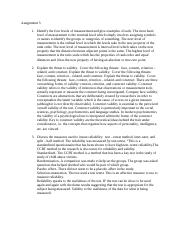The Uniform Crime Reporting (UCR) program and the National Crime Victimization Survey (NCVS) are two important data collection efforts that are used to measure crime in the United States. Both programs have their own unique strengths and limitations, and understanding how they differ can help policymakers and researchers better understand the state of crime in the country.
The UCR program is a nationwide effort to collect and report data on crime incidents that are reported to law enforcement agencies. The program was established in 1929 and is administered by the Federal Bureau of Investigation (FBI). The UCR program collects data on eight major crime categories: murder and nonnegligent manslaughter, rape, robbery, aggravated assault, burglary, larceny-theft, motor vehicle theft, and arson. The UCR program is based on the principle of voluntary reporting by law enforcement agencies, and its data is used to help understand trends and patterns in crime over time.
One of the strengths of the UCR program is that it has been in operation for over 90 years, which means it has a long history of data collection that can be used to identify trends and patterns in crime over time. Additionally, the UCR program is a well-established and widely recognized source of crime data, which means that it is often used as a benchmark for other studies and reports on crime.
However, the UCR program also has some limitations. One of the main limitations is that it only captures crime incidents that are reported to law enforcement agencies. This means that it does not capture crimes that go unreported, such as crimes that are not witnessed by anyone or crimes that are not considered serious enough to report. As a result, the UCR program may undercount the true extent of crime in the country.
The NCVS is another important data collection effort that is used to measure crime in the United States. The NCVS is a nationally representative survey of households that is administered by the U.S. Census Bureau and the Bureau of Justice Statistics. The NCVS collects data on a range of crime victimization experiences, including personal and property crimes, as well as crimes against households and businesses. The NCVS is based on the principle of self-reporting by individuals, and its data is used to understand trends and patterns in crime victimization over time.
One of the strengths of the NCVS is that it captures a wider range of crime incidents than the UCR program, including crimes that are not reported to law enforcement agencies. This means that the NCVS is able to provide a more comprehensive picture of crime in the United States. Additionally, the NCVS collects data on a range of victimization experiences, which means that it is able to provide insights into the impact of crime on individuals and communities.
However, the NCVS also has some limitations. One of the main limitations is that it relies on self-reporting, which means that it is subject to biases and errors that can be introduced by respondents. Additionally, the NCVS is a relatively new data collection effort, which means that it does not have the same level of historical data as the UCR program.
Overall, the UCR program and the NCVS are two important data collection efforts that are used to measure crime in the United States. While they both have their own strengths and limitations, they provide valuable insights into the state of crime in the country and can help policymakers and researchers better understand trends and patterns in crime over time.







